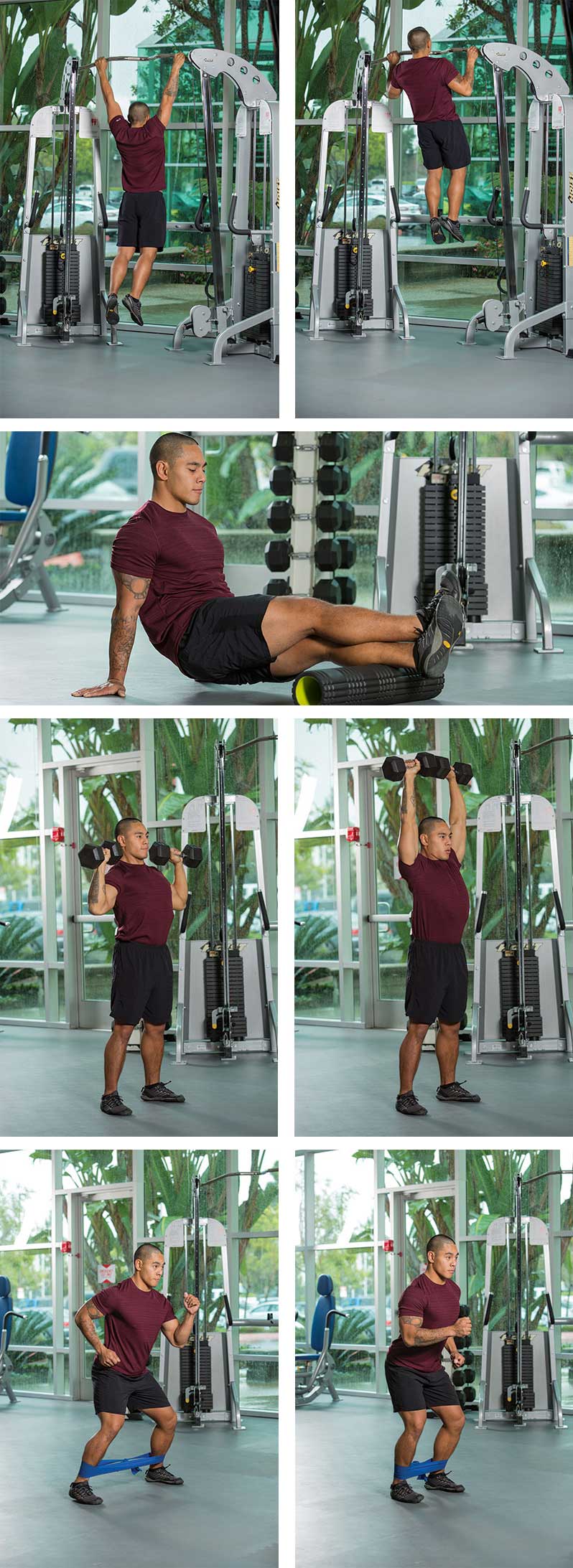Delivering time-efficient, highly effective fitness programs is essential to creating a successful career as a personal trainer or health coach.
Using super-sets or giant sets is the most common approach, but the way these are typically employed often misses some potential for more sophisticated programming. For example, a bench press is often super set with a back row. Fine, but this super set—like most—train the same fitness characteristic: strength, in this particular example. There’s more to fitness than strength and if we explore the various characteristics of fitness, we can discover an expanded array of options when creating exercise routines.
Here is a creative system for helping you get the most of the time your clients spend in their workouts. It starts with one simple rule: Always do something with all of your workout time.
Here’s how. There are two variables with each exercise:
- The characteristic(s) of fitness each exercise uses
- Whether the exercise focuses on the upper body, lower body or total body
From one movement to the next, you simply change at least one of the two variables.
Example #1
| Exercise | Fitness Characteristics | Body Region |
| Pull-up | Strength | Upper body |
| Calf self-massage | Self-massage | Lower body |
| Overhead shoulder press | Strength | Upper body |
| Lateral band walks | Mobility, coordination | Lower body |

In this example, both variables change from exercise to exercise. The exercises could be grouped together until all sets of this giant set are done.
Example #2
| Exercise | Fitness Characteristics | Body Region |
| Skater hop | Power, agility, balance, coordination | Lower body |
| Hamstring Hammock | Flexibility | Lower body |
| Seated cable row | Strength | Upper body |
The Details
The characteristics of fitness are agility, balance, coordination, endurance, reactivity, power, strength, mobility, flexibility, stability and self-massage. Following is a brief definition of each one:
- Agility = rapid, efficient changes in speed or direction
- Balance = successfully maintain body position in dynamic (some part of you is moving) balance or static (nothing is moving) balance
- Coordination = combine multiple discrete actions to produce a smooth larger, movement
- Endurance = successfully sustain an effort for longer than two to three minutes (threshold varies by individual)
- Reactivity = take in sensory input (auditory, visual, kinesthetic) and produce an appropriate and timely physical response
- Power = generate a large amount of force through a short period of time; typically resulting in a faster movement
- Strength = generate a large amount of force through a long period of time; typically resulting in a slower movement
- Self-massage = using various tools to provide a self-directed massage benefit to the body
- Flexibility = range of motion in a joint; typically passive
- Mobility = “active flexibility,” or range of motion you can control; typically active
These components can be divided into two broad categories: performance and capability. Performance includes strength, endurance, power and agility, and include activities that require high energy output and generate short-term localized muscular or global bodily fatigue.
The remaining components of fitness fall under the capability category and include activities that enhance our abilities and function without exhausting us while we train them. We can work on these without getting exhausted and they make us more capable, even in the short term.
| Performance | Capability |
| Strength | Balance |
| Endurance | Coordination |
| Power | Reactivity |
| Agility | Mobility |
| Flexibility | |
| Stability | |
| Self-massage |
Now, we simply create workout plans that touch on each of these areas so clients are always doing something during their workout time. Any rest between sets is used to work on something else. Here is another example:
Example 3
| Exercise | Fitness Characteristics | Body Region |
| Creative Jumping Jacks | Endurance, coordination | Total body |
| Hip hinge with joint distraction | Mobility | Lower body |
| Reaction ball catches | Agility, reactivity | Total body |
| Dynamic balance | Balance, coordination | Lower body |
Choose either a performance or capability component, then choose whether to focus on the upper body, lower body or total body. Now you can start using super sets or giant sets, but with many more options. As you move from one exercise to the next when creating combinations, either change from performance to capability, or change the body-region focus of the exercise.
Many exercises develop more than one fitness characteristic, as shown in the examples above, so be sure to list them all when building your routines.
Wrap-up
This approach allows you to develop all of the characteristics of fitness to deliver a truly complete program without wasting any time in the workouts you create. Clients will appreciate the time-efficiency of this program and as they follow these workouts, and will appreciate the more robust and thorough fitness levels they enjoy, as well.
 by
by 










 by
by